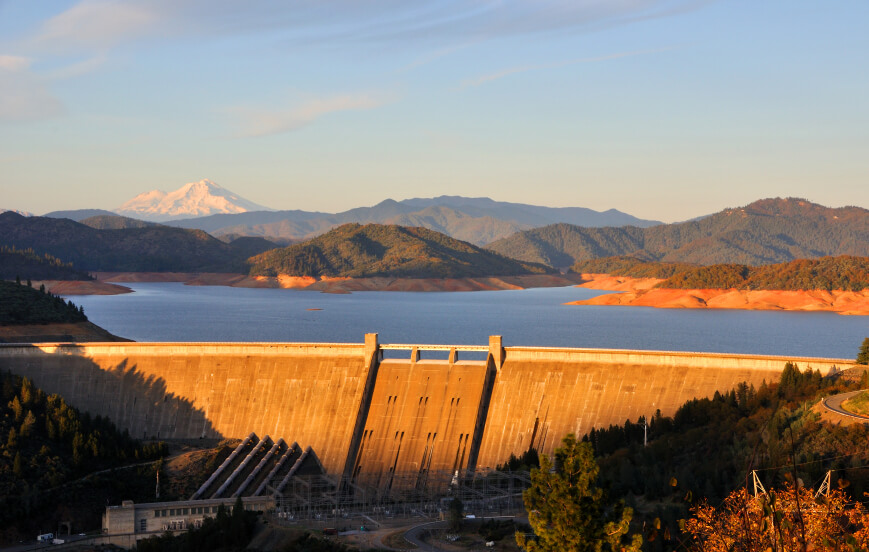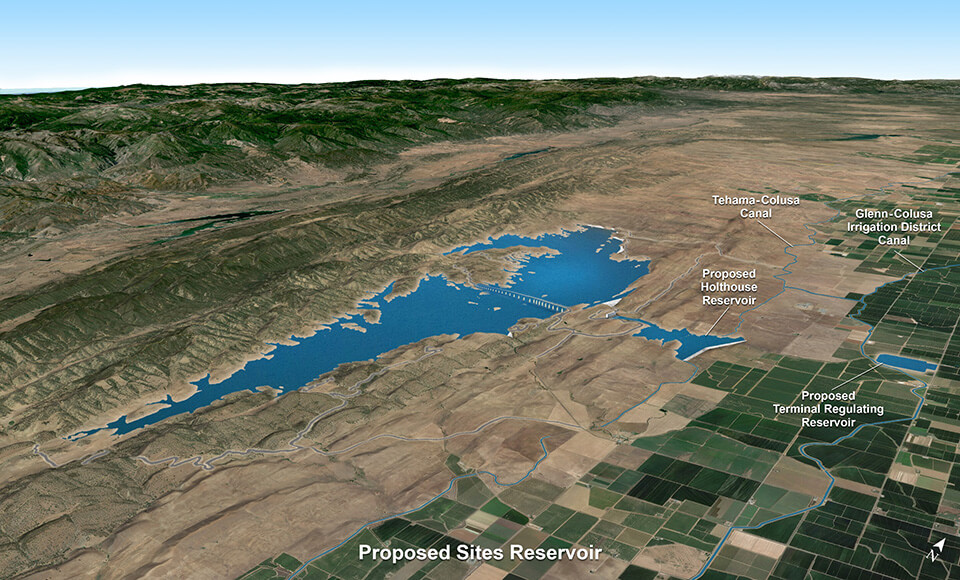By Fritz Durst, Reclamation District 108; and Brent Hastey, Yuba Water Agency
Dry Year Task Force Chairs
While they remain hopeful the rest of winter will provide much more rain and snow, water resources managers in the Sacramento Valley are preparing for the potential for a dry year.
While the prospect of a dry year is always jarring and challenging, we have confidence in the experience and knowledge that our water resources managers gained in 2014-15, and the strategies this region has implemented since that time to prepare for a dry year. Additionally, the Northern California Water Association has convened our Dry Year Task Force to coordinate our efforts throughout the region.
In evaluating what’s ahead – it’s important to focus on what is, instead of fearing what could be. We are continually reminded that there is variability inherent in California’s precipitation and weather patterns, which has been vivid this year, and our water system has been built to address this variability and the maldistribution of water in California. We are also reminded that there is tremendous value in having stored water, both in reservoirs and aquifers, for both flood protection earlier in the year and for water supply management for all beneficial uses in these types of years. Our water resources managers are prepared for this dynamic and they have made significant efforts since 2014/15 for the purpose of preparing us for dry years to come.

The Hydrology
As we start the year, the region is setting up as follows:
- Surface water storage: Lake Shasta is 45% of capacity and 71% of historical average; Lake Oroville 35% of capacity and 56% of historical averge; and Folsom Lake 29% of capacity and 57% of historical average. See summary here.
- Snowpack: The early January snow survey has shown 27% of April 1 average and 57% percent of normal for this date. See summary here.
- Groundwater aquifers in the region are generally full and in balance, with a few pockets that local agencies are watching in the region.
- Term 91: The State Water Board on December 24, 2020 suspended Term 91, which importantly allowed diversions for the fish food programs in the region. Term 91 is designed to protect project releases from storage when the Delta is in balance. More information is available from the SWRCB.
What We Learned from 2014/15
There were many lessons learned in 2014/15 that we are carrying forward in the Sacramento Valley. We have a more comprehensive plan for addressing the impacts of a dry year at both the state and local level. In 2014/15, local water resources managers worked with state and federal agencies to take swift action, and the systems and philosophies developed will help this region in dry years. This includes:
Multi-Benefit Water Management. The region continues to practice managing water for multiple benefits, which is proven to be especially critical in dry years. Water resources managers in the Sacramento Valley continue to actively implement various multi-benefit programs and projects for the 21st century that restore natural ecosystem functions and wetlands habitat for birds and aquatic species, protect and promote the restoration of endangered and threatened species, enhance the reliability of water supplies on a regional and inter-regional basis, and provide significant regional and statewide economic benefits.
Ridgetop to River Mouth Water Management. The water managers in the region are actively pursuing watershed management, with ridgetop to river mouth water management. There are unique opportunities in the Sacramento River Basin to “utilize natural infrastructure such as forests and floodplains,” as well as advancing “groundwater recharge” to help with sustainable groundwater management. Vibrant coalitions have coalesced around expanding natural infrastructure and the Governor’s recent Executive Order on nature-based solutions promotes “multi-benefit, voluntary and cooperative approaches that protect and restore biodiversity while stewarding natural and working lands, building climate resilience, and supporting economic sustainability.” For more details, see here.
Implementing the Water Rights Priority System: Water rights and contracts are the foundation for water operations throughout California. The orderly implementation of the water rights system provides economic and environmental stability to address dry year challenges. In 2014/15 this system worked in the Sacramento Valley. In the dry year of 2015, water supplies in the Sacramento Valley were reduced by 25 percent or more in every part of the region, with some areas and people having their surface water supplies reduced 100 percent. The severity of these cuts was based on the specific conditions and underlying water rights or contracts. While any reductions negatively impact the beneficial uses of water in the region—including water for cities and rural communities, farms, fish, birds and recreation—water suppliers have planned for reductions and in many places are able to develop and implement alternative water management plans in response to the lack of surface water in dry years due to the certainty that the water rights priority system provides.

Advancing Sites Reservoir – Reliable Water Supplies for Multiple Benefits: Sites Reservoir is an innovative 21st century water project—an off-stream regulating reservoir on the west-side of the Sacramento Valley that can store water for the future by capturing it during high runoff periods, and then releasing it for various beneficial uses at a later time. With the project’s location upstream of the Delta and near the Sacramento River, water in Sites Reservoir would serve multiple benefits in the Sacramento Valley, as well as the Delta and the rest of the state. Sites would be a dramatic enhancement to California’s water system and the first storage project in California with a dedicated supply for the environment. Sites can provide a freshwater ecosystem water budget that would help provide flexibility and make water available during drier years—which would help ensure water availability for the ecosystem—as well as be operated to address the uncertainties of a changing climate by creating resilient environmental and water supply benefits.
Expanding Conjunctive Use in Urban and Agricultural Areas: Throughout the Sacramento Valley, water suppliers are expanding the coordinated use of surface water and groundwater supplies in different year types to advance sustainable water management, including efforts to achieve balance under the Sustainable Groundwater Management Act (SGMA). By using surface water when supplies are plentiful and then switching to groundwater during drier years, water managers can ensure that both of these supplies are used to serve multiple benefits across all year types while minimizing negative environmental and economic effects. Examples of conjunctive use efforts include the Sacramento Regional Water Bank in the Sacramento metropolitan area and the ongoing work of many agencies in agricultural areas.
As we continue into 2021, we will be moving forward with the knowledge and lessons we’ve learned from the past. We will continue to work tirelessly, collaborating with both government and community, to create solutions and strategies that allow the region we love so much to thrive.






As long as California manages state water releases we will always be in a drought..